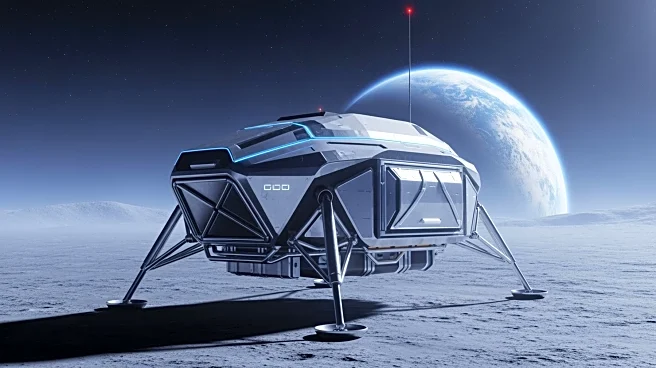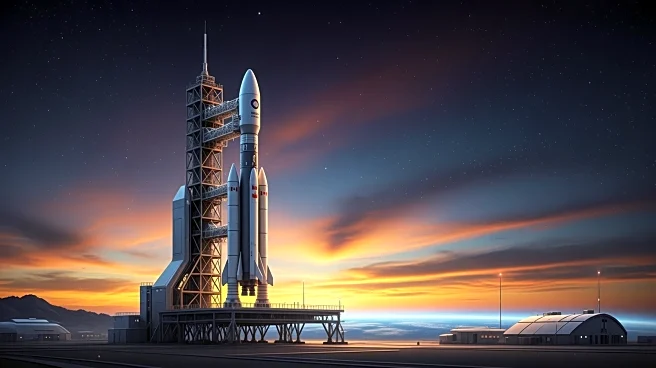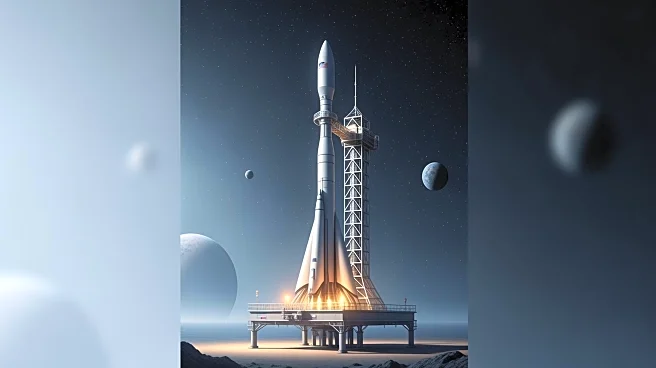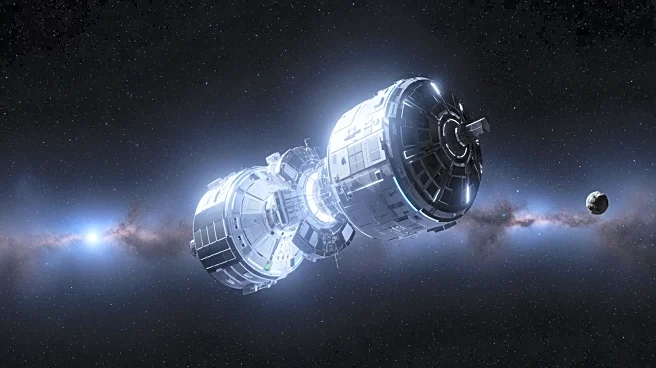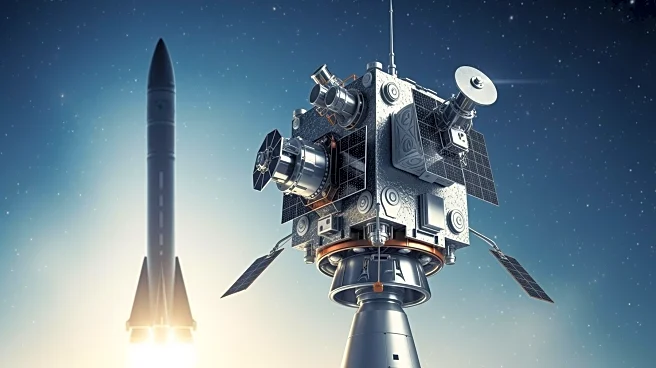What's Happening?
SpaceX and Blue Origin are intensifying their efforts to secure NASA contracts for lunar landings as part of the Artemis program. SpaceX, which has been developing its Starship human landing system (HLS)
since 2023, is currently behind schedule on key milestones such as orbital propellant transfer and human-rating of its Starship HLS. Despite receiving $2.7 billion from NASA, SpaceX faces competition from Blue Origin, which has its own HLS contract for the Artemis V mission. Blue Origin is exploring an uncrewed lunar landing for its Blue Moon Mk1 variant, while SpaceX continues to develop its Starship, which has completed 11 test flights. Both companies are working on architectures that require orbital propellant depots for refueling missions to the moon.
Why It's Important?
The competition between SpaceX and Blue Origin is crucial for the future of U.S. lunar exploration and the Artemis program, which aims to return humans to the moon for the first time since the Apollo era. The success of these missions could significantly impact the U.S. space industry, potentially leading to advancements in space technology and increased investment in space exploration. The outcome of this competition will determine which company will play a pivotal role in NASA's lunar missions, influencing the direction of future space exploration efforts. Additionally, the development of reusable spacecraft and orbital refueling capabilities could lower the cost of space travel, making it more accessible.
What's Next?
NASA plans to extend its request for proposals to the broader space industry once the federal government reopens, allowing other companies to submit their lunar landing architectures. SpaceX aims to complete its orbital propellant transfer demonstration by 2026, which is critical for its Starship HLS to be human-rated. Blue Origin, on the other hand, is preparing for a potential uncrewed lunar landing with its Blue Moon Mk1 variant. The competition between these companies is expected to intensify as they strive to meet NASA's requirements and secure their positions in the Artemis program.
